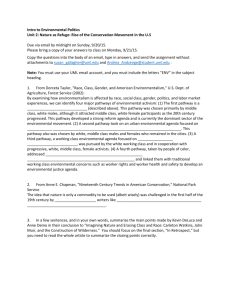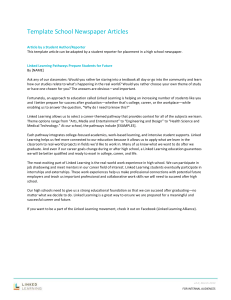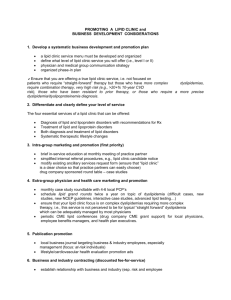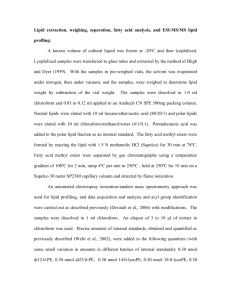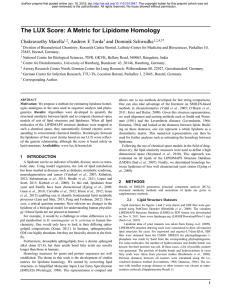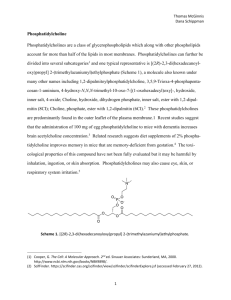Understanding the physiological consequences of defects in the
advertisement
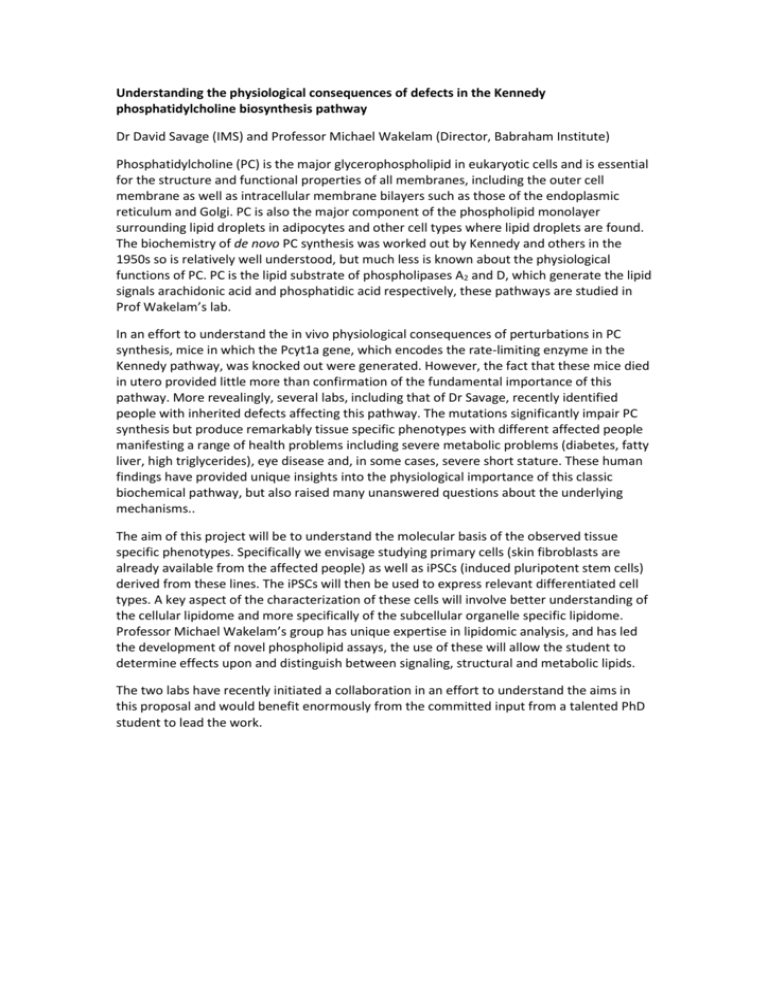
Understanding the physiological consequences of defects in the Kennedy phosphatidylcholine biosynthesis pathway Dr David Savage (IMS) and Professor Michael Wakelam (Director, Babraham Institute) Phosphatidylcholine (PC) is the major glycerophospholipid in eukaryotic cells and is essential for the structure and functional properties of all membranes, including the outer cell membrane as well as intracellular membrane bilayers such as those of the endoplasmic reticulum and Golgi. PC is also the major component of the phospholipid monolayer surrounding lipid droplets in adipocytes and other cell types where lipid droplets are found. The biochemistry of de novo PC synthesis was worked out by Kennedy and others in the 1950s so is relatively well understood, but much less is known about the physiological functions of PC. PC is the lipid substrate of phospholipases A2 and D, which generate the lipid signals arachidonic acid and phosphatidic acid respectively, these pathways are studied in Prof Wakelam’s lab. In an effort to understand the in vivo physiological consequences of perturbations in PC synthesis, mice in which the Pcyt1a gene, which encodes the rate-limiting enzyme in the Kennedy pathway, was knocked out were generated. However, the fact that these mice died in utero provided little more than confirmation of the fundamental importance of this pathway. More revealingly, several labs, including that of Dr Savage, recently identified people with inherited defects affecting this pathway. The mutations significantly impair PC synthesis but produce remarkably tissue specific phenotypes with different affected people manifesting a range of health problems including severe metabolic problems (diabetes, fatty liver, high triglycerides), eye disease and, in some cases, severe short stature. These human findings have provided unique insights into the physiological importance of this classic biochemical pathway, but also raised many unanswered questions about the underlying mechanisms.. The aim of this project will be to understand the molecular basis of the observed tissue specific phenotypes. Specifically we envisage studying primary cells (skin fibroblasts are already available from the affected people) as well as iPSCs (induced pluripotent stem cells) derived from these lines. The iPSCs will then be used to express relevant differentiated cell types. A key aspect of the characterization of these cells will involve better understanding of the cellular lipidome and more specifically of the subcellular organelle specific lipidome. Professor Michael Wakelam’s group has unique expertise in lipidomic analysis, and has led the development of novel phospholipid assays, the use of these will allow the student to determine effects upon and distinguish between signaling, structural and metabolic lipids. The two labs have recently initiated a collaboration in an effort to understand the aims in this proposal and would benefit enormously from the committed input from a talented PhD student to lead the work.
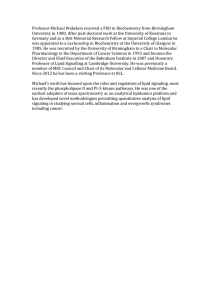

![Major Change to a Course or Pathway [DOCX 31.06KB]](http://s3.studylib.net/store/data/006879957_1-7d46b1f6b93d0bf5c854352080131369-300x300.png)


